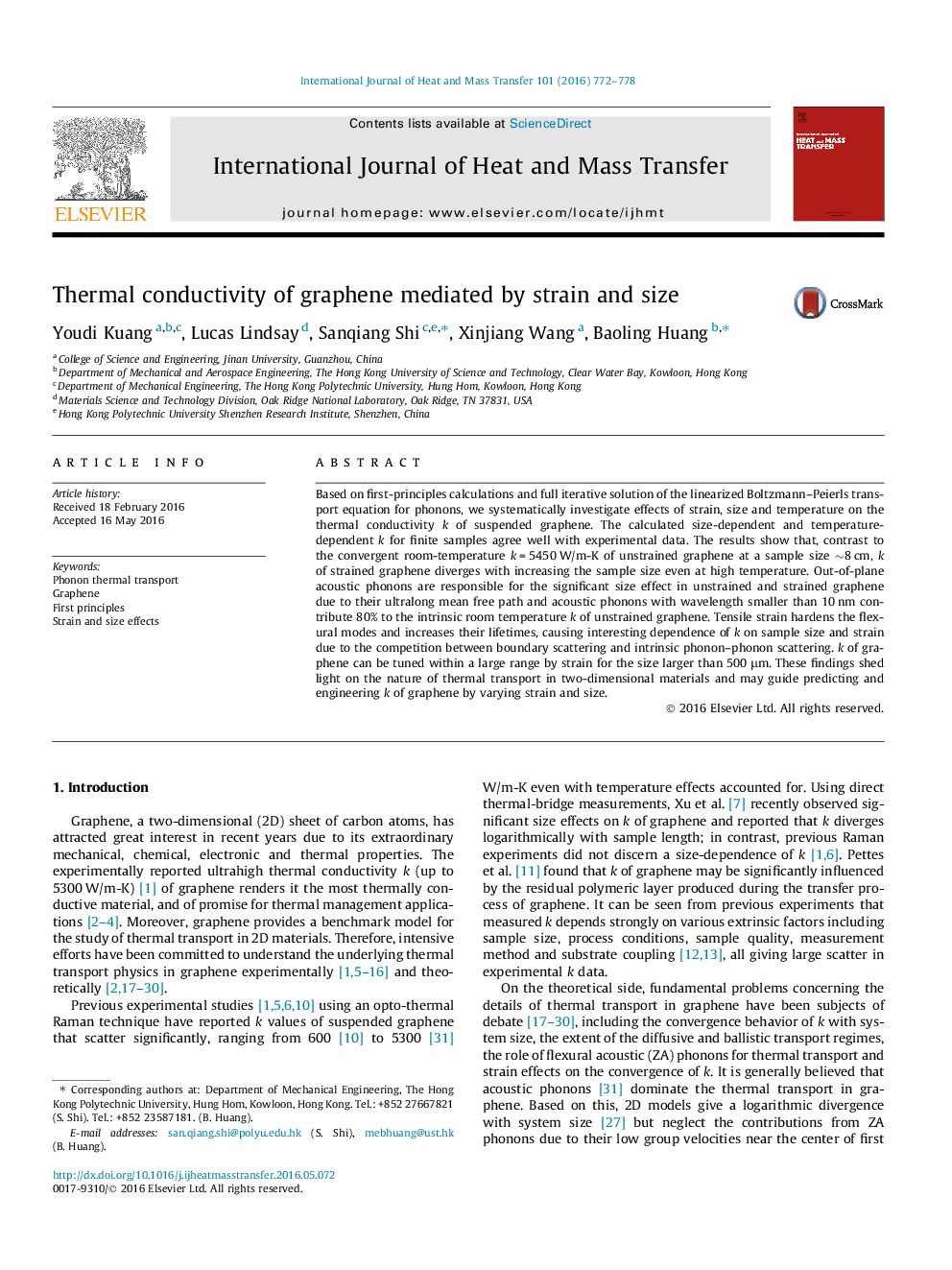| Article ID | Journal | Published Year | Pages | File Type |
|---|---|---|---|---|
| 7055386 | International Journal of Heat and Mass Transfer | 2016 | 7 Pages |
Abstract
Based on first-principles calculations and full iterative solution of the linearized Boltzmann-Peierls transport equation for phonons, we systematically investigate effects of strain, size and temperature on the thermal conductivity k of suspended graphene. The calculated size-dependent and temperature-dependent k for finite samples agree well with experimental data. The results show that, contrast to the convergent room-temperature k = 5450 W/m-K of unstrained graphene at a sample size â¼8 cm, k of strained graphene diverges with increasing the sample size even at high temperature. Out-of-plane acoustic phonons are responsible for the significant size effect in unstrained and strained graphene due to their ultralong mean free path and acoustic phonons with wavelength smaller than 10 nm contribute 80% to the intrinsic room temperature k of unstrained graphene. Tensile strain hardens the flexural modes and increases their lifetimes, causing interesting dependence of k on sample size and strain due to the competition between boundary scattering and intrinsic phonon-phonon scattering. k of graphene can be tuned within a large range by strain for the size larger than 500 μm. These findings shed light on the nature of thermal transport in two-dimensional materials and may guide predicting and engineering k of graphene by varying strain and size.
Keywords
Related Topics
Physical Sciences and Engineering
Chemical Engineering
Fluid Flow and Transfer Processes
Authors
Youdi Kuang, Lucas Lindsay, Sanqiang Shi, Xinjiang Wang, Baoling Huang,
